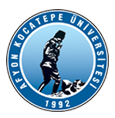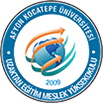Distance Education is one of the popular educational approaches of today, which enables the implementation of educational activities by removing the limitations related to time and space through various educational methods and techniques.
As can be seen, the Distance Education approach provides an education environment independent from time and space, while eliminating inequality of opportunity and providing a more flexible education opportunity. Since Distance Education can be carried out in various fields such as adult education, child education, parent education and in-service training for institutions, it can easily be said that it has a wide range of applications. In this context, Distance Education, which has a very dynamic structure compared to traditional approaches, has an important place in both curriculum and subject.
When the Distance Education approach is examined in detail, it is seen that it is divided into various sub-areas depending on the educational methods and techniques. Accordingly, the Internet-based Distance Learning method is one of the most popular Distance Learning methods of today. Especially, with this method, which is offered under the leadership of computer technology, students can follow the courses offered at the desired frequency and regardless of location. Audio, video, graphics, two-dimensional or three-dimensional animations, as well as structures designed to receive instant feedback, enriched with a working environment that provides students with more permanent and enjoyable learning experiences.
In Internet-based Distance Education, synchronous (asynchronous) and asynchronous (different time) communication can be established between students and educators through services such as interactive web pages, e-mail, file transfer platforms, discussion and newsgroups, chat rooms. Internet and Web technologies ensure the communication between people on a large scale in a healthy way. It also meets a wide range of different learning styles, supports an active learner-centered learning environment, and allows real-life experiences to be offered.


